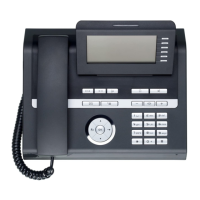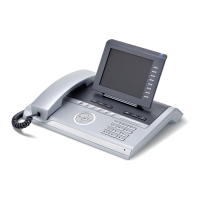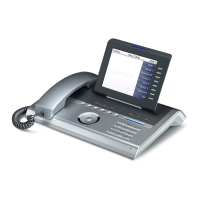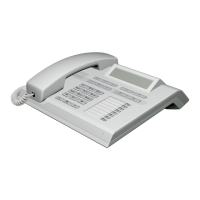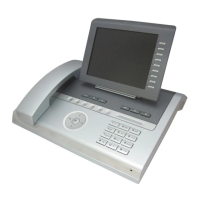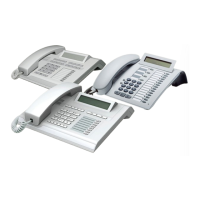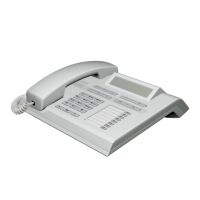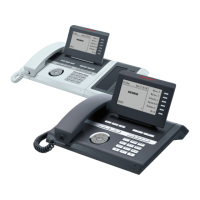Open Communications Principles and Best Practices 19/03/2012, page 12
Multi Address Appearance (MAA)
A telephone is normally associated with a directory number, or, generally, with a SIP AoR.
This number is used for placing calls to the associated telephone and for displaying the
telephone's (user's) identity when placing calls to another party. The number is also used
when more than one call appearance is supported due to additional features like call
waiting.
The term ‘keyset’ denotes a telephone which is associated with more than one number. This
allows a given telephone to act on behalf of other phone numbers, resp. users. Just like with
traditional telephony systems, people sometimes refer to lines instead of numbers, hence
keyset phones are also referred to as ‘multiline phones’. The main line, i.e. the line/directory
number associated with a given physical telephone, is called primary line. All other lines,
which can also be handled on other phones, are denoted as secondary lines. Please note that
call log and MWI (Message Waiting Indication) are supported only for the primary line, not
for secondary lines.
The programmable feature keys are used for handling the lines and their respective call
appearances, supported by the associated LEDs reflecting the line/call status. The number of
lines that can be configured is depending on the phone model. For OpenStage 60/80, up to
30 lines can be configured. OpenStage 15/20/40 are limited to 18 lines.
This feature can be used for different use cases, for example:
Address multiple users at one phone
Enhanced call hold scenarios
Allow more than two incoming calls at one phone
For some use cases, however, this feature can not be used, for example:
MLA. If the line is configured at more than one phone, incoming calls are sent to the
last registered device
Line status observation. If the same line is configured at more than one phone, the
line status is not presented at these phones.
MAA is automatically activated if line keys are configured at the phone. Line key
administration is done by the administrator; the user has no influence on these settings. The
phone operates as an MAA phone ‘out of the box’. Depending on the administrator settings,
the phone will react slightly different in basic user interactions.
Even if only one line key is configured, the phone changes into line presentation mode. The
line presentation mode helps the user to keep track of the different line statuses.
